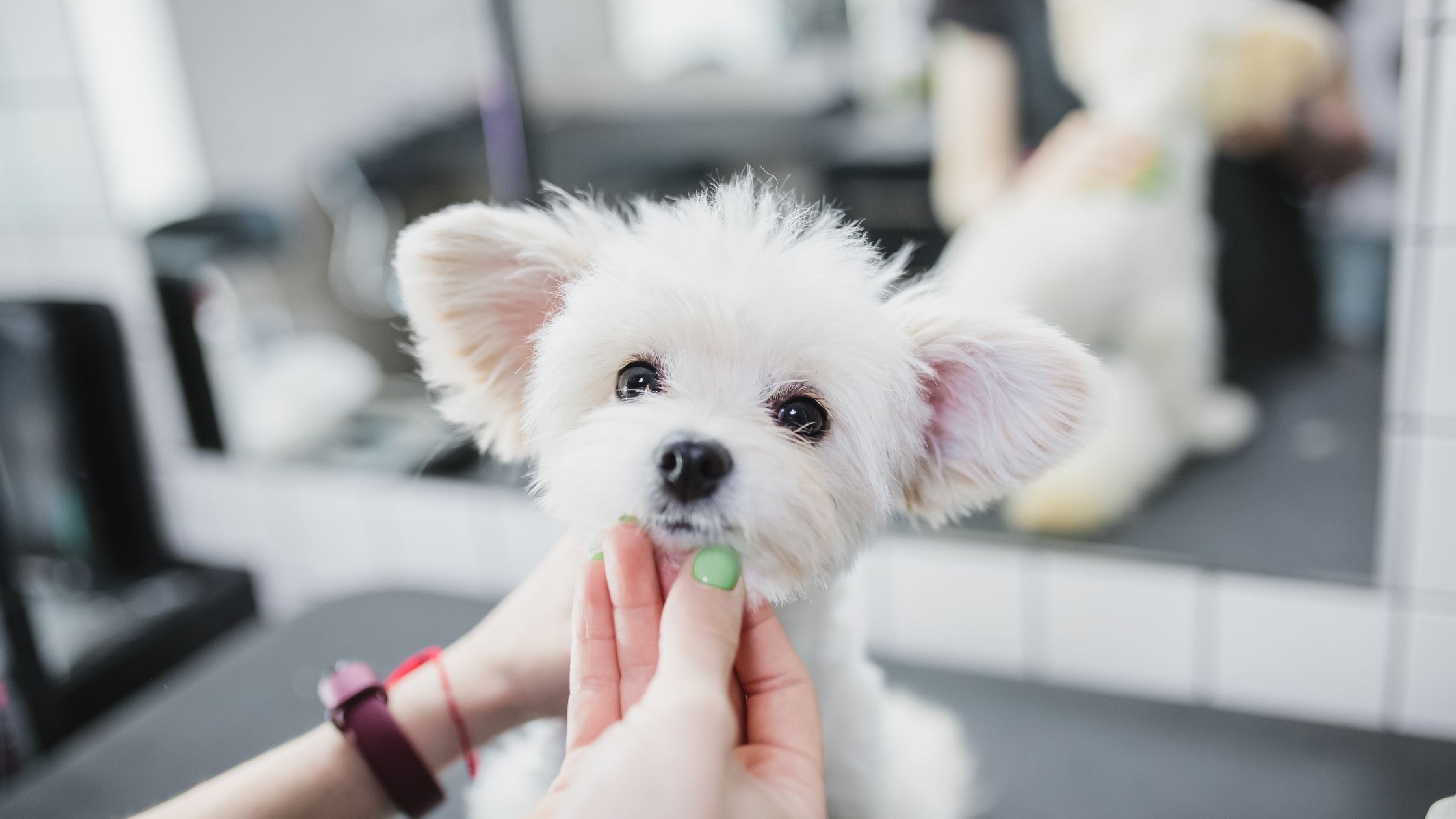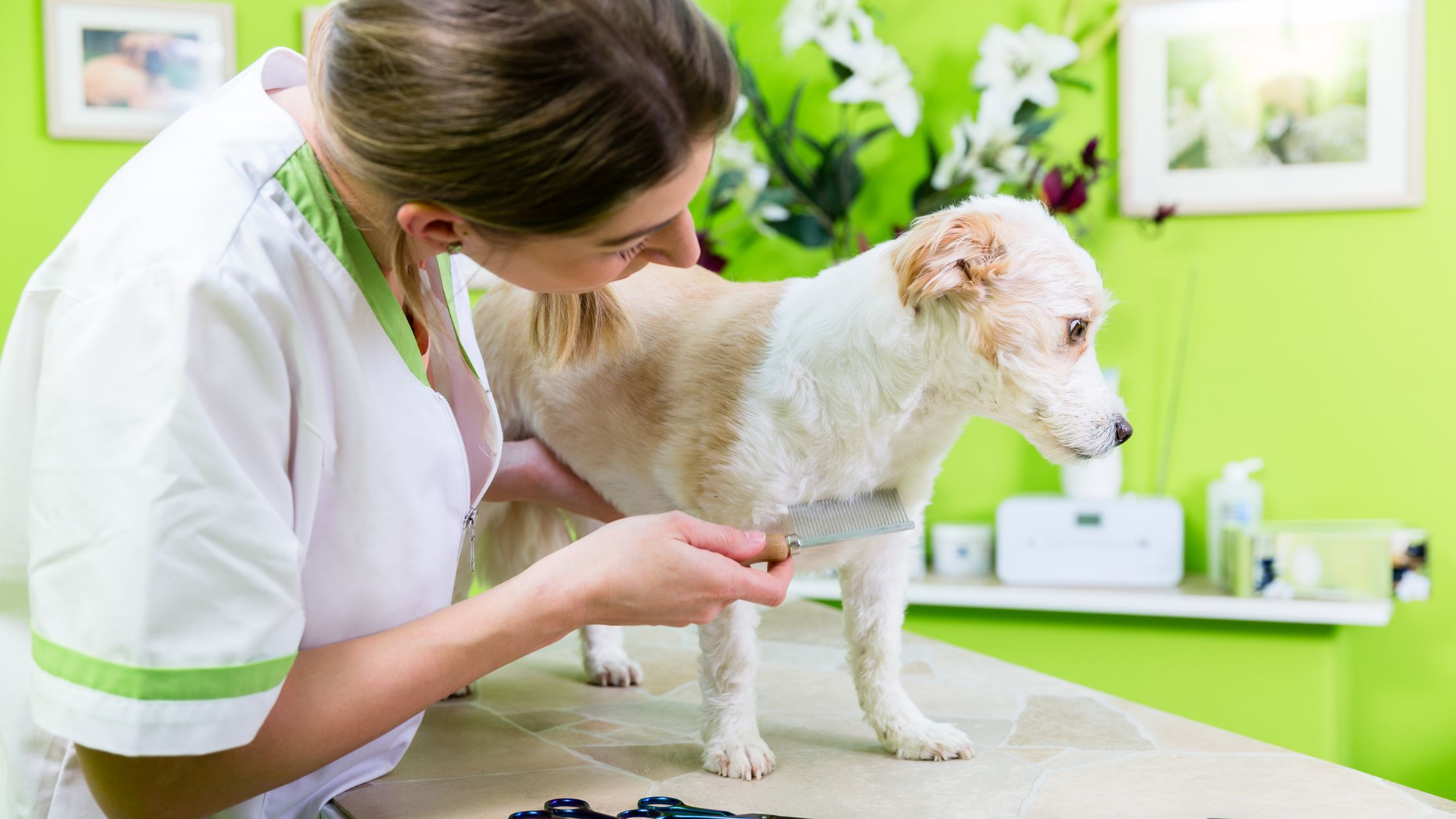Imagine walking a tightrope when it comes to your furry friend’s grooming routine. While some dogs may breeze through the process, for others, it can be a nail-biting experience. But have you ever wondered if there’s more to those anxious tail wags and nervous whimpers?
Stay tuned as we uncover the silent signals your pooch may be sending during grooming sessions and explore ways to make it a stress-free affair, perhaps even consulting with the experts at the Petiquette Cartel for some invaluable insights.
Key Takeaways
- Loud noises and unfamiliar scents can trigger anxiety in dogs during grooming.
- Recognise signs of anxiety like panting, yawning, and trembling.
- Create a stress-free grooming environment with calm, gradual introductions and positive reinforcement.
- Proper handling techniques, patience, and a relaxing atmosphere are essential for reducing grooming stress in dogs.
Common Stress Triggers in Dog Grooming
When grooming dogs, common stress triggers like loud noises and unfamiliar scents can cause anxiety in your furry friend. It’s important to create a calm environment to help your dog feel more at ease during grooming sessions. Loud clippers or dryers can startle dogs, so opt for quieter grooming tools if possible.
Introducing your dog to grooming scents gradually can also help reduce their anxiety.
Additionally, sudden movements or rough handling during grooming can make your dog feel uneasy. Approach grooming with a gentle touch and reassure your dog with soothing words to build trust. Dogs are sensitive to their surroundings, so maintaining a quiet and peaceful atmosphere can go a long way in easing their stress.
Signs of Anxiety in Dogs
To recognise signs of anxiety in dogs, observe their body language and behaviour closely. Dogs communicate their stress in various ways, and understanding these signs can help you address their anxiety effectively. Here are some common indicators of anxiety in dogs:
- Excessive Panting: Rapid and heavy panting, especially when not related to physical exertion or heat, can signal stress.
- Yawning: Excessive yawning, especially in situations where the dog isn’t tired, can indicate anxiety.
- Trembling: Unexplained trembling or shaking, particularly in situations that don’t typically provoke fear, may be a sign of anxiety.
- Avoidance Behaviour: If a dog tries to hide, escape, or avoid a grooming session, it could be due to anxiety.
- Lip Licking: Continuous lip licking, even when there’s no food around, can be a sign of stress in dogs.
Tips for Stress-Free Dog Grooming

For a smooth and stress-free dog grooming experience, focus on creating a calm and comfortable environment for your furry friend. Start by introducing your dog to grooming tools gradually, allowing them to sniff and explore to reduce fear.
Establish a routine to help your dog become familiar with the process, making grooming a regular and predictable event. Use positive reinforcement such as treats and praise to associate grooming with pleasant experiences.
Ensure that the grooming area is well-lit, warm, and free from distractions to help your dog feel at ease. Consider using gentle grooming techniques and tools suitable for your dog’s coat type to prevent discomfort.
Take breaks if your dog becomes anxious, allowing them time to relax before continuing. Lastly, maintain a gentle and patient approach throughout the grooming session to build trust and create a positive grooming experience for your beloved pet.
Importance of Proper Handling Techniques
Proper handling techniques are crucial for ensuring a safe and comfortable grooming experience for your dog. By mastering the art of handling your furry friend during grooming sessions, you can help reduce stress and anxiety, making the process more enjoyable for both of you.
Here are some key tips to keep in mind:
- Stay Calm: Dogs can sense your emotions, so maintaining a calm demeanour will help keep them relaxed.
- Use Positive Reinforcement: Reward good behaviour with treats or praise to create a positive association with grooming.
- Handle Gently: Be gentle when touching sensitive areas like ears and paws to prevent discomfort.
- Take Breaks: If your dog seems overwhelmed, take breaks to give them time to relax before continuing.
- Practice Patience: Grooming takes time, so be patient and allow your dog to adjust to the process at their own pace.
Creating a Relaxing Grooming Environment
When setting up your grooming space, ensure the environment is calm and inviting to help your dog relax during the grooming process. Start by choosing a quiet area free from distractions. Soft lighting can create a soothing atmosphere. Playing gentle music or using aromatherapy with scents like lavender can further aid in relaxation.
Keep grooming tools organised and within reach to minimise disruptions. Introduce your dog to the grooming space gradually, allowing them to sniff around and get comfortable before starting the grooming session. Use non-slip mats on the grooming table to prevent any slipping and ensure your dog feels secure.
Maintain a calm demeanour yourself, as dogs can pick up on your emotions. Speak in a soothing tone and offer treats or breaks as rewards for good behaviour. By creating a tranquil grooming environment, you can help reduce your dog’s stress and make the grooming experience more pleasant for both of you.
Frequently Asked Questions
Can Certain Breeds of Dogs Be More Prone to Stress During Grooming Than Others?
Certain breeds of dogs can be more prone to stress during grooming than others. It’s important to understand your dog’s temperament and provide them with a calm environment to make the grooming experience more comfortable.
How Can a Pet Owner Help Prepare Their Dog for Grooming Appointments to Reduce Stress?
To help prepare your dog for grooming appointments and reduce stress, establish a positive association with grooming tools, gradually introduce grooming sessions, use treats for positive reinforcement, maintain a calm demeanour, and choose a groomer experienced in handling anxious dogs.
Are There Any Alternative Grooming Methods or Tools That Can Help Alleviate Stress for Dogs?
Try using calming techniques like aromatherapy or gentle massage during grooming sessions. These methods can help alleviate stress for your dog. Remember to remain patient and positive to create a more comfortable experience for them.
What Should Be Done if a Dog Becomes Too Stressed During Grooming and Needs to Stop the Session?
If a dog becomes too stressed during grooming and needs to stop the session, calmly pause the grooming, speak soothingly, and give them a break. Reassure them with gentle pets, treats, or a favourite toy before considering resuming the process at a later time.
How Can Pet Owners Distinguish Between Normal Grooming-Related Stress and Underlying Health Issues in Their Dogs?
To distinguish between normal grooming stress and health issues in your dog, observe their behaviour closely. Look for signs like excessive panting, trembling, or avoidance. If you notice unusual symptoms, consult a veterinarian to address any underlying health concerns promptly.

